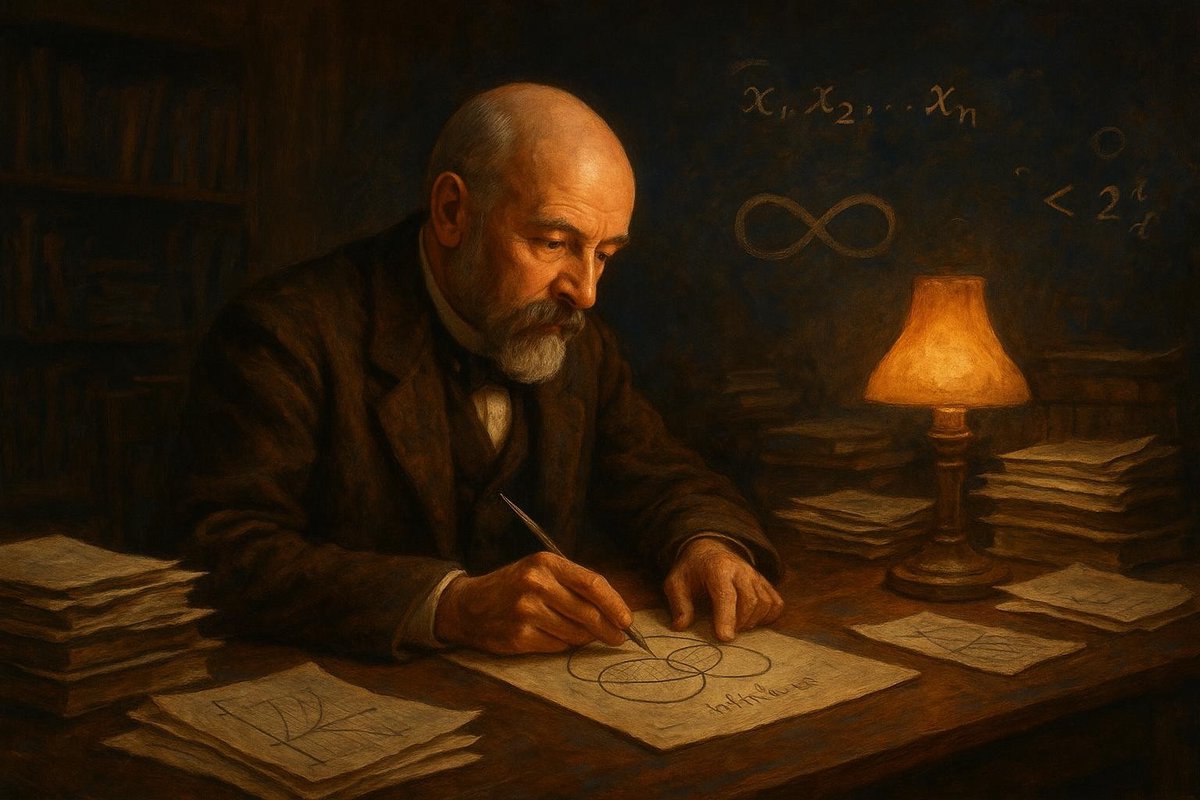
The Infinite Puzzle: How Big is Infinity?
What if I told you that not all infinities are created equal? It sounds like a paradox, doesn’t it? We often think of infinity as an uncontainable vastness, like the endless sky or the ocean’s horizon. But Georg Cantor, a brilliant mathematician from the late 19th century, dared to challenge this notion. His exploration of set theory and the so-called ‘sizes’ of infinity wasn’t just a mathematical exercise; it was a profound shift that shook the very foundations of mathematics.
Unpacking the Question: A Tale of Infinite Numbers
Before Cantor, mathematicians grappled with infinity like a cat with a ball of yarn—an endless tangle. The concept wasn’t entirely new; ancient Greeks had wrestled with the idea, and 17th-century mathematicians used infinity in calculus. However, these were more philosophical musings than practical tools. Cantor brought clarity to the chaos, asking: could different infinities be measured?
- Consider the set of natural numbers: 1, 2, 3, and so on.
- Now, think of the set of even numbers: 2, 4, 6, and so on.
- Intuition might suggest that there are fewer even numbers, but both sets are infinite.
Cantor demonstrated that these two sets have the same size, a concept called ‘countable infinity’. Yet, when comparing natural numbers to real numbers (which include decimals), he showed that some infinities are larger—an ‘uncountable infinity’.
Surprising Facts: Cantor’s Infinite Revelations
Interestingly, Cantor’s work wasn’t immediately embraced by the mathematical community. His ideas seemed as counterintuitive as they were daring. Many mathematicians, including Henri Poincaré, initially resisted, calling it a ‘disease’ of mathematics.
- Even the great mathematician Leopold Kronecker, Cantor’s former mentor, opposed his theories.
- Cantor was often isolated, with his work going largely unrecognized during his lifetime.
- However, as time went on, his ideas gained traction, fundamentally altering mathematical thought.
Consider this thought experiment: Imagine an endless hotel, known as Hilbert’s Hotel, with an infinite number of rooms, all occupied. If a new guest arrives, they can still be accommodated by shifting each guest one room down, showing the paradoxical nature of infinite sets.
What Science Says: The Legacy of Cantor’s Infinities
Cantor’s theory helped lay the groundwork for modern mathematics, influencing fields such as topology, logic, and computer science. His work sparked debates that extended beyond mathematics into philosophy and theology, challenging our understanding of the universe.
- His diagonal argument proved that the set of real numbers is larger than the set of natural numbers.
- This revelation opened up new worlds within mathematics, exploring concepts of infinity in ways never imagined before.
- George Cantor once remarked, “The essence of mathematics is in its freedom.” His ideas indeed liberated mathematics from the constraints of finite thinking.
His revolutionary ideas echo in the way we understand not just numbers, but the universe itself, evoking awe and curiosity about the infinite possibilities that surround us.
What it Means for Us: Infinite Possibilities
For us today, Cantor’s work serves as a reminder of the power of curiosity and the courage to question the seemingly impossible. His exploration of infinity encourages daring thought, pushing boundaries and embracing the unknown.
- It invites us to reconsider what we perceive as limits.
- Can this inspire innovation and creativity in other fields?
- What other ‘infinities’ do we encounter in our lives, waiting to be explored?
If young mathematicians remain as open-minded and bold as Cantor, who knows how many more mathematical mysteries await our discovery?
As you ponder these infinite possibilities, remember Cantor’s legacy: a testament to the unending quest for knowledge. His work continues to inspire, reminding us that the universe is vast, full of wonder, and always ready to reveal more.
Fuel Someone Else’s Curiosity
Did this journey through Cantor’s infinities spark your curiosity? Share this article and ignite a discussion among your friends and family about the mysteries of mathematics. Who knows, the next great mathematical mind might just be waiting for a spark! Let’s keep exploring the infinite together.

Leave a Reply